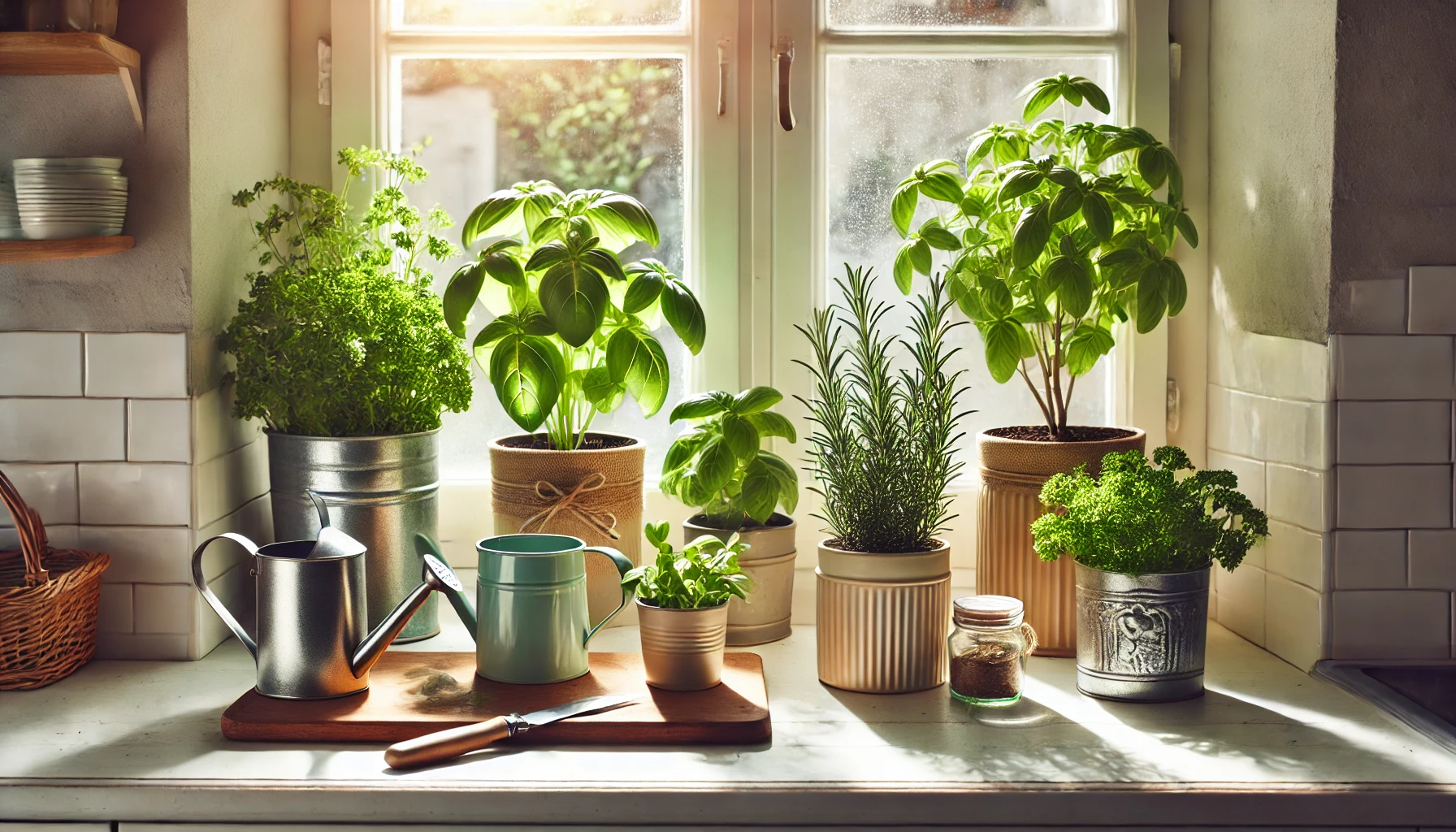Growing your own herbs indoors is a practical and rewarding way to have fresh ingredients at your fingertips year-round. Whether you want to enhance your cooking or enjoy the aroma of fresh greenery, an indoor herb garden is easy to set up and maintain. This guide will walk you through the steps to create a thriving indoor herb garden.
Benefits of an Indoor Herb Garden
- Convenience: Fresh herbs are always available for cooking or garnishing dishes.
- Cost-Effective: Save money by growing your own herbs instead of buying them regularly.
- Improved Air Quality: Herbs add greenery and purify the air in your home.
- Decorative Appeal: Herb gardens bring a natural and aesthetic touch to your space.
Best Herbs for Indoor Gardening
1. Basil
- Care Tips: Requires bright, indirect sunlight and well-draining soil. Water when the topsoil feels dry.
2. Mint
- Care Tips: Thrives in indirect light and slightly moist soil. Mint grows quickly and can be harvested often.
3. Parsley
- Care Tips: Needs moderate sunlight and consistent watering. Parsley is versatile and grows well in containers.
4. Cilantro
- Care Tips: Prefers cool temperatures and indirect light. Keep the soil consistently moist.
5. Chives
- Care Tips: Requires bright light and well-draining soil. Chives are hardy and produce flavorful leaves.
6. Rosemary
- Care Tips: Needs plenty of sunlight and dry soil. Allow the soil to dry out between waterings.
7. Thyme
- Care Tips: Grows well in bright light with minimal watering. Thyme is low-maintenance and aromatic.
Steps to Create an Indoor Herb Garden
Step 1: Choose a Location
- Find a spot that receives at least 6-8 hours of bright, indirect sunlight daily.
- South-facing windows are ideal. If natural light is limited, use grow lights to supplement.
Step 2: Select Containers
- Use pots with drainage holes to prevent waterlogging.
- Consider using decorative pots, mason jars with drainage layers, or small wooden planters.
Step 3: Prepare the Soil
- Use a well-draining potting mix specifically formulated for herbs.
- Avoid garden soil, which can be too dense for indoor containers.
Step 4: Plant the Herbs
- Sow seeds or plant small herb seedlings in each container.
- Space the herbs appropriately to allow airflow and prevent overcrowding.
Step 5: Water Properly
- Water herbs when the top inch of soil feels dry. Avoid overwatering, as herbs prefer slightly dry conditions.
- Use room-temperature water to avoid shocking the plants.
Step 6: Provide Adequate Light
- Position your garden near a bright window or use LED grow lights to mimic sunlight.
- Rotate pots occasionally to ensure even light exposure.
Step 7: Harvest Regularly
- Trim herbs often to encourage new growth. Harvesting prevents plants from becoming leggy and keeps them healthy.
Caring for Your Indoor Herb Garden
Fertilizing
- Use a liquid fertilizer diluted to half strength every 4-6 weeks during the growing season.
- Avoid over-fertilizing, as it can alter the flavor of the herbs.
Pruning and Maintenance
- Regularly prune dead leaves and stems to promote fresh growth.
- Remove any weeds or debris from the soil surface.
Managing Pests
- Inspect plants regularly for pests like aphids or spider mites.
- Treat infestations with neem oil or a mixture of soap and water.
Creative Ideas for Your Herb Garden
- Windowsill Garden: Arrange herbs in small pots along your kitchen windowsill for easy access while cooking.
- Hanging Herb Garden: Use vertical planters or hanging pots to save space.
- Herb Tower: Stack pots or use tiered stands to grow multiple herbs in a compact area.
- Decorative Displays: Incorporate herbs into your home décor with stylish containers or wall-mounted planters.
Troubleshooting Common Issues
- Yellow Leaves: Usually caused by overwatering or poor drainage. Adjust your watering schedule.
- Leggy Growth: Indicates insufficient light. Move the herbs to a brighter spot or add grow lights.
- Wilting Plants: Often a sign of underwatering or extreme heat. Check soil moisture and adjust care.
Conclusion
An indoor herb garden is a wonderful way to enjoy fresh, flavorful ingredients year-round. By selecting the right herbs, providing adequate light and water, and maintaining proper care, you can create a thriving and beautiful herb garden that enhances your cooking and living space.
